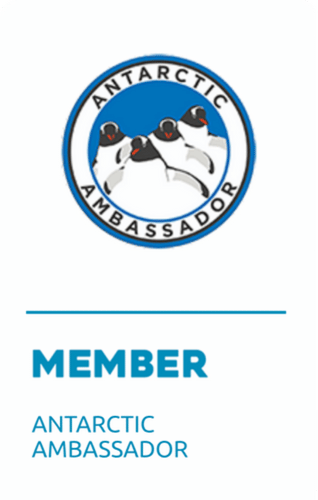Our 2011-12 season expeditions faced brutally cold early season temperatures and tough sledging conditions on historic and new routes to the South Pole. Expedition blogs described the ever-changing balance between the highlights and harsh realities of Antarctica, while cold and repetitive strain injuries; altitude and fitness concerns; and equipment problems took their toll on several teams.
Ross Sea Routes to the South Pole
A record number expeditions paid tribute to explorers Roald Amundsen and Robert Falcon Scott by re-tracing all or part of their routes to the South Pole.
Amundsen’s Route/Axel Heiberg Glacier
- The Norwegian Sørpolen Expedition re-traced Amundsen’s entire route from the Bay of Whales to the South Pole in 48 days. But where Amundsen used dogs, the modern-day explorers used kites. At Titan Dome – highest point on trip – they had strong tailwinds and whiteout conditions. Top-notch ski sailor Jølle towed the entire expedition – four sleds and three people – at speeds of up to 18 mph (30 km/h)! Racing against time as the Amundsen Centenary approached, Jan-Gunnar Winther and Stein P. Aasheim were picked up by ski aircraft and flown to the Pole to participate in the official ceremony. Vegard Ulvang and Harald Dag Jølle skied the last leg, arriving on 14 December Norwegian time, 100 years to the day after Roald Amundsen, having retraced his entire route.
- Henry Worsley and Lou Rudd also re-traced Amundsen’s route, as part of the Scott-Amundsen Centenary Race. They began their journey with 330 lb (150kg) sleds and completed it without any re-supplies in 69 days. Despite the physical challenges, Henry’s blog reflected on his desire, ‘not to become a “slave” to daily distances, (or) start and finish times, and instead enjoy walking in the footsteps of Amundsen, in tune with the rhythm of the journey.’ The team have posted photos and video from their trip. Henry is the first person to have re-traced both Amundsen’s and Scott’s routes.
- Norwegian outfitter Latitude led a South Pole Jubilee Expedition team from the base of the Axel Heiberg Glacier to the South Pole. They arrived at the Pole on December 18 after 24 days of travel. Several team members completed a crossing of the continent, by kite-skiing north to Hercules Inlet. A second South Pole Jubilee team, Victor Bobok and Igor Grishkov, followed Amundsen’s route for 250km and joined the Norwegian Centenary celebrations at the South Pole on December 14.
- Asle Johanssen attempted to re-trace Amundsen’s route, using period clothing and equipment. Deep snow on the Axel Heiberg Glacier forced his team to track-set, then load haul, a slow process. Johanssen struggled with altitude once on the plateau and requested a pick-up. His two team members, one of them suffering from cold injury to his toes, were also picked up several days later and flown to the Pole.
Scott’s Route/Beardmore Glacier
Mark Langridge led the other Scott-Amundsen Centenary Race team along Scott’s route from Cape Evans to the South Pole. The team spent several days navigating through heavy crevasses at the top of the Beardmore Glacier – as did Scott – before breaking clear onto the polar plateau. They reached the South Pole on January 17 after 72 days of hard travel, and 100 years to the day after Scott arrived, bringing with them the Polar Medal posthumously awarded to Capt Oates. One can only imagine what an emotional moment that must have been.
Leverett Glacier Route – First Solo Female Crossing
Felicity Aston completed the first solo female crossing of Antarctica, with her Kaspersky ONE Transantarctic Expedition. Her route ascended from the Ross Ice Shelf, up the Leverett Glacier, crossed through the South Pole, then continued north to Hercules Inlet on the Ronne Ice Shelf: a distance of 1084 miles (1744km) over 59 days. Felicity’s video, shot minutes after she arrived at Hercules Inlet, captures her emotions at the conclusion of this enormous, all-encompassing endeavor. Also interesting is her short video (shot before her expedition) on the mental challenges of Antarctic travel.
West Approach Routes to the South Pole
Ski South Pole – Messner Start
Five expeditions skied to the South Pole along the ‘Messner Start’ route. All teams encountered very rough sastrugi from 87°S to 88°S and snow “like sand” beyond 88°S.
- The Hvitserk team kept up a strong and steady pace throughout their expedition despite tough conditions, completing the distance in 35 days.
- Alan Lock became the first visually impaired person to ski to the South Pole. ALE’s Ski South Pole – Messner / Polarvision Expedition team, guided by Hannah McKeand, arrived after 40 days of travel.
- The WeberArctic team skied to the Pole in 40 days. One team member was evacuated early-on and another had to be evacuated, after a tumble left him with a broken wrist and swollen knee. The rest of the team continued on the Pole. Richard and one team member kite-skied back to the coast at Hercules Inlet in 13 days.
- Howard Fairbank opted to ski the route solo, sharing philosophical musings and beautiful photos of his 39 day experience on his blog.
Ski South Pole – Hercules Inlet
Seven expeditions skied from Hercules Inlet to the Pole and two of those expeditions completed unsupported return trips. All of the teams reported brutally cold conditions and very high winds during the first two weeks of travel.
- In a world of self-promotion and world records, Aleks Gamme is a quiet star. The Norwegian skied solo and unsupported to the Pole and back without any drama. He arrived at Hercules Inlet, then skied back to meet Cas and Jonesy, so that they could share the achievement of ‘first unsupported South Pole return journey’.
- Cas and Jonesy completed their 1430 mile (2300 km) return trip in 90 days. They arrived back at Union Glacier on Australia day and reported being “stoked” about their success, despite having lost 121 lb (55 kg) between them.
- Fellow Australian Mark George also intended to ski to the South Pole, then return. His early reports describe his sled dragging ‘like an anchor’, then a broken ski tip and tent pole and stove problems. Despite these setb
acks he continued on to the Pole, arriving on day 45. Mark made the difficult decision to end his journey at the Pole, due to illness of a close family member. - Boot and binding issues plagued Mark Wood for much of his solo journey. But he managed to come up with creative repair solutions and trek onward, arriving at the South Pole after 50 days of travel.
- Albert Bosch and Carles Gel were tentbound for 12 days at the start of their expedition due to extreme cold and wind. Gel left the expedition on day 19 at 80°S. Bosch continued solo, completing the rest of the expedition in 46 days.
- Polar Explorers led a guided Ski South Pole expedition. After one team member left the expedition early-on, another was evacuated due to respiratory and altitude problems around 87°30’S. The rest of the team continued and, despite blisters and polar thigh, they completed a successful expedition to the South Pole in 58 days.
- Steffen Dahl ended his expedition near 88°S due to health problems.
Ski Last Degree
A number of teams skied the ‘last degree’, from 89°S to the South Pole.
New Overland Record
The fastest overland journey to the Pole by far was the Thomson-Reuters Eikon South Pole Expedition. The specially built, bio-fueled vehicle completed the journey in 1 day 15 hours 54 minutes, setting a new world record for overland journey to the South Pole.
Pole to Pole Run
Even more impressive was the Antarctic leg of Pat Farmer’s Pole to Pole Run. Beginning at Union Glacier, Pat ran for 15-20 hours (30-45 miles / 50-70 km) per day, for 20 days, reaching the South Pole on January 18.
East to West Antarctica
Several expeditions received logistic support from ALE, as they crossed from east to west Antarctica.
- Alberto Inarrutegi led the Naturgas / BBK Transantartika 2011 expedition, the first ever Antarctic Traverse from Novolazarevskaya to Hercules Inlet, via the South Pole. The team arrived at Hercules Inlet on January 10 after 54 days of kite-skiing.
- Ramon Larramendi’s 2011 Antarctic Expedition Acciona crossed Antarctica from Novolazarevskaya to Patriot Hills via the South Pole, by catamaran. The wind-powered, zero emissions vehicle covered the 2175 miles (3500km) in 45 days.
- Sebastian Copeland and Eric McNair-Landry undertook one of the most ambitious expeditions of the season, a 2485 mile (4000 km) traverse from Novolazarevskaya to Hercules Inlet, via the Pole of Inaccessibility and the South Pole. The 79 day journey was not without physical and physchological challenges. Sebastian suffered from deep frostbite on his big toe, after trauma from his boot left it more susceptible to cold injury. And from the team’s blog, “Day 47: Psychological Phase. Elevation 12072 feet (3680m). It is still as a corpse out there…I have a feeling that, close to fifty days in, we may be entering the tougher psychological phase of the expedition: waiting for wind, and seeing the days burn by, without making the mileage. It doesn’t look like the weather will be cooperating soon…. So the focus remains on the aptly named Pole of Inaccessibility!”
Congratulations to all of the adventurers, who keep the spirit of Antarctic exploration alive! And a special nod of appreciation to the teams whose expeditions help raise awareness and funds for charity. We encourage you to check out the expedition websites and perhaps make a donation to one of the very worthwhile causes.





